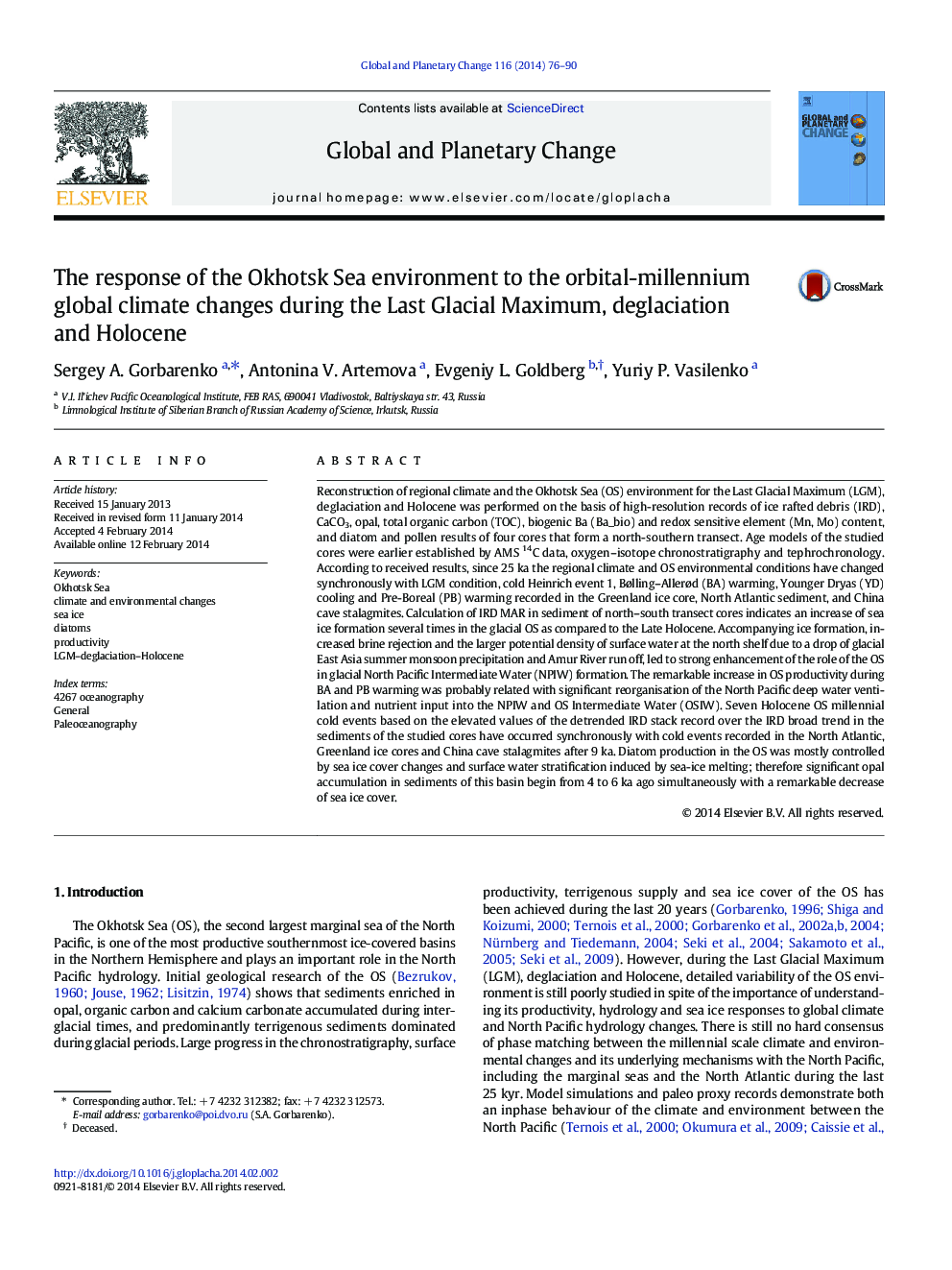| کد مقاله | کد نشریه | سال انتشار | مقاله انگلیسی | نسخه تمام متن |
|---|---|---|---|---|
| 6348238 | 1621665 | 2014 | 15 صفحه PDF | دانلود رایگان |
• Synchronicity climate changes during LGM, HE1, BA, YD and PB in North hemisphere.
• IRD MAR records indicate still important Okhotsk Sea role in NPIW glacial formation.
• OS productivity rises during BA and Pre-Boreal due to NW Pacific ventilation changes.
• IRD stack shows seven Holocene cold events coeval with N. Atlantic–atmospheric cycles.
• Tight relationship of the diatom production in the OS with sea ice cover changes.
Reconstruction of regional climate and the Okhotsk Sea (OS) environment for the Last Glacial Maximum (LGM), deglaciation and Holocene was performed on the basis of high-resolution records of ice rafted debris (IRD), СаСО3, opal, total organic carbon (TOС), biogenic Ba (Ba_bio) and redox sensitive element (Mn, Mo) content, and diatom and pollen results of four cores that form a north-southern transect. Age models of the studied cores were earlier established by AMS 14C data, oxygen–isotope chronostratigraphy and tephrochronology. According to received results, since 25 ka the regional climate and OS environmental conditions have changed synchronously with LGM condition, cold Heinrich event 1, Bølling–Allerød (BA) warming, Younger Dryas (YD) cooling and Pre-Boreal (PB) warming recorded in the Greenland ice core, North Atlantic sediment, and China cave stalagmites. Calculation of IRD MAR in sediment of north–south transect cores indicates an increase of sea ice formation several times in the glacial OS as compared to the Late Holocene. Accompanying ice formation, increased brine rejection and the larger potential density of surface water at the north shelf due to a drop of glacial East Asia summer monsoon precipitation and Amur River run off, led to strong enhancement of the role of the OS in glacial North Pacific Intermediate Water (NPIW) formation. The remarkable increase in OS productivity during BA and PB warming was probably related with significant reorganisation of the North Pacific deep water ventilation and nutrient input into the NPIW and OS Intermediate Water (OSIW). Seven Holocene OS millennial cold events based on the elevated values of the detrended IRD stack record over the IRD broad trend in the sediments of the studied cores have occurred synchronously with cold events recorded in the North Atlantic, Greenland ice cores and China cave stalagmites after 9 ka. Diatom production in the OS was mostly controlled by sea ice cover changes and surface water stratification induced by sea-ice melting; therefore significant opal accumulation in sediments of this basin begin from 4 to 6 ka ago simultaneously with a remarkable decrease of sea ice cover.
Journal: Global and Planetary Change - Volume 116, May 2014, Pages 76–90
